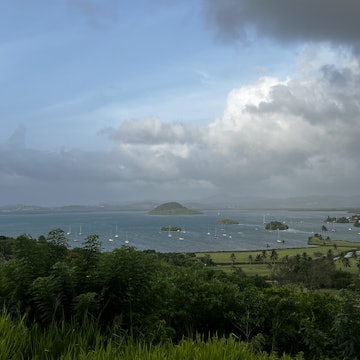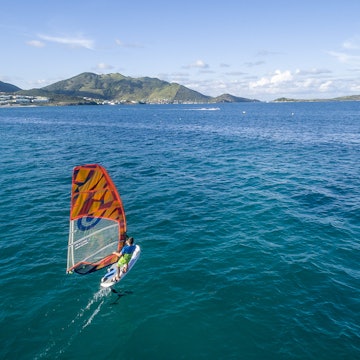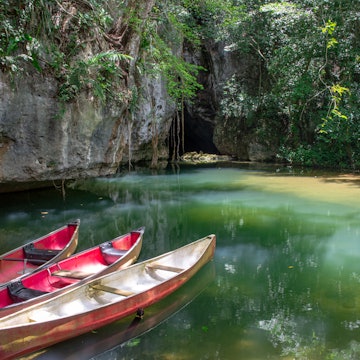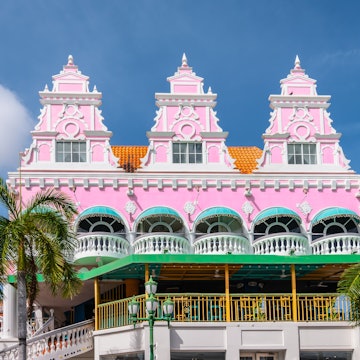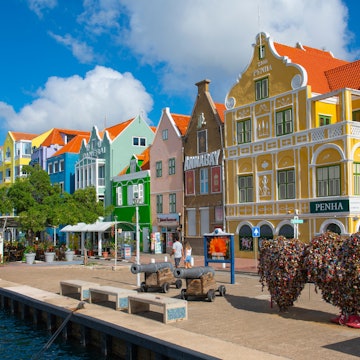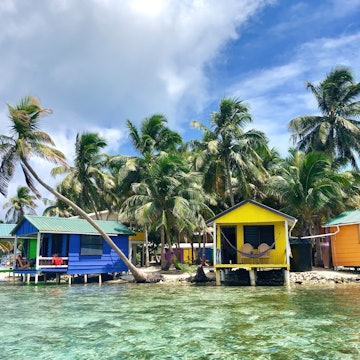

The annual, epic Carnival celebrations embody Trinidad and Tobago’s diversity and exuberance. John de la Bastide/Shutterstock
The twin-island republic of Trinidad and Tobago is more than just an idyllic tropical paradise.
The pleasures of the crisp sea air, postcard-worthy beaches and natural beauty here are undeniable, it’s true. Yet the heart of Trinbagonian living is the beautiful blend of people, places and spaces of diverse origins and ethnic backgrounds. If you’re looking for adventures with a dose of vibrant, pulsating culture, then sweet T&T is just right for you.
Here, friendly residents jovially remember you by name during Carnival celebrations, and next-level partying – colloquially known as fêteing – seems to be in everyone’s DNA. Food lovers encounter unforgettably delectable flavors. In Trinidad and Tobago, history, harmony and heritage are celebrated – and your travel pursuits can get as quiet or wild as you wish.
Trinidad and Tobago is one of the best countries to visit next year. See our full list of Best in Travel 2025 winners.

When should I go to Trinidad and Tobago?
In this part of the world, year-round sunshine is the glorious order of the day, with northeast trade winds providing balance – letting you beat the heat. Trinidad and Tobago experiences two weather patterns: the dry season (January to May) and the rainy season (June to December). Thanks to the lowest average temperatures, the January-to-April window is the best times to visit T&T. Although hurricane season officially lasts from June to November, Trinidad and Tobago’s geographical location – it’s the southernmost island in the Caribbean – by and large spares it from the worst storms.
While cultural activities take place throughout the year, December’s Christmas season and the globally renowned, boisterous Carnival celebrations are the peak festival periods. Christmas comes with a soundtrack of parang – a popular Spanish-based folk music that arrived in T&T from neighboring Venezuela.
The world-renowned Trinidad Carnival reaches its apex on the Monday and Tuesday before Ash Wednesday in a cultural event filled with euphoria and exuberance. Tobago also hosts an exciting version of Carnival every year, in October.
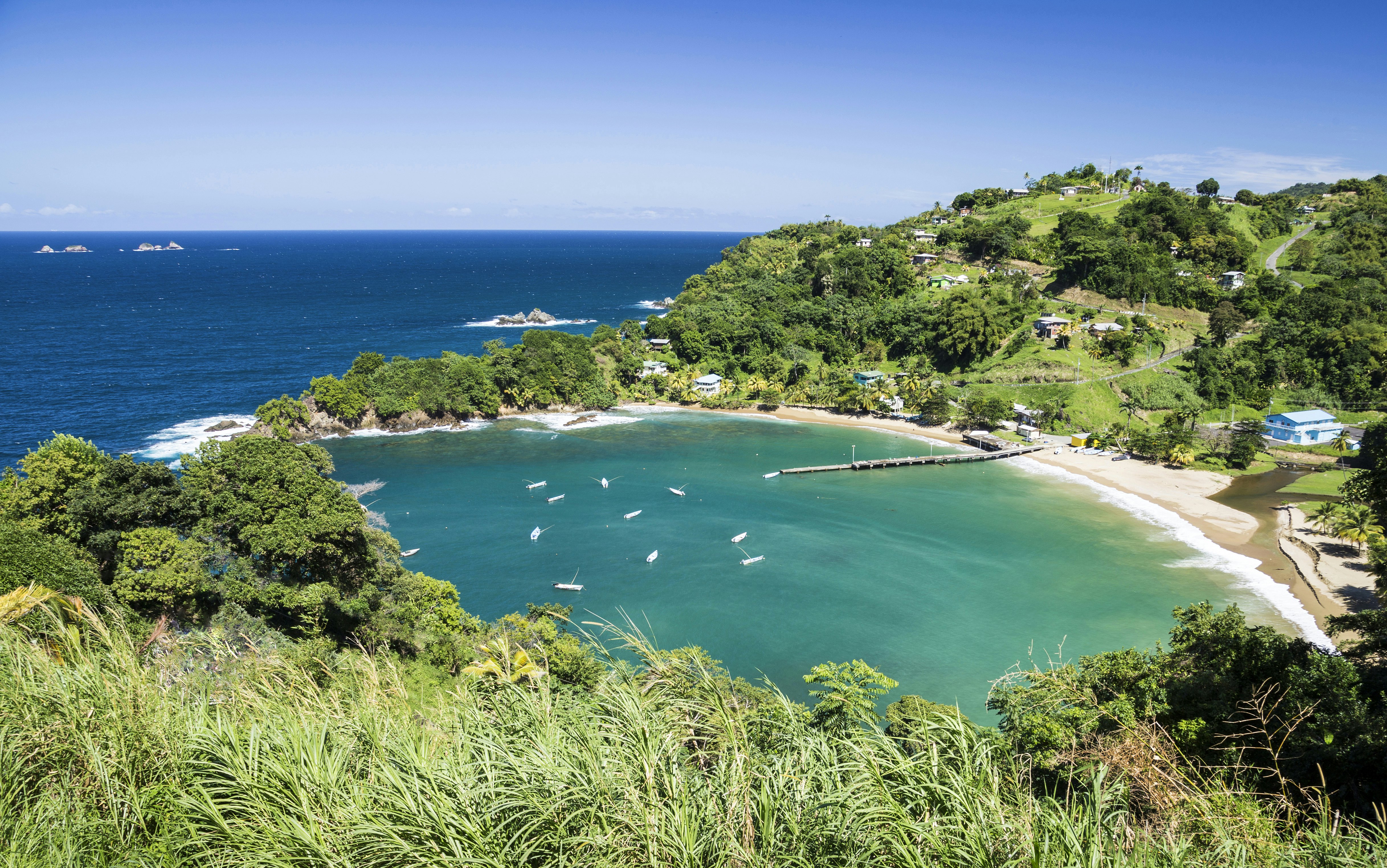
How much time should I spend in Trinidad and Tobago?
It depends on your resources, curiosities and interests. To get a full feel for the beauty and dynamism of this country – and to give yourself a chance to explore both islands – seven nights would be ideal. This amount of time will let you feel the difference in the vibe of each island; we recommend four nights in Trinidad and three in Tobago. Known for its bustling nightlife and larger-scale tourism, Trinidad is vastly different from its serene sister island of Tobago, with its stunning ivory-white sand and cerulean-tinted waters.

Is it easy to get in and around Trinidad and Tobago?
Most visitors arrive by air, with international flights landing at Piarco International Airport in Trinidad. Tobago’s N.R. Robinson International Airport is just minutes away from the bustling beachside of Crown Point.
Trinidad’s public transportation system consists of “maxi-taxis.” These passenger vans operate on fixed routes, bear colored stripes that correspond to their area of operation and seat 12 to 25 passengers. The Public Transport Service Corporation operates public buses on both islands. Official taxis, labeled with an “H,” are available from the airports, along with numerous rideshare options, such as as AllRiDi, Travee, DeliverMe and TT RideShare. Car rentals are also an option, starting from about $40 per day
National carrier Caribbean Airlines offers 25-minute flights between the islands for $70 round trip; the local ferry can take you by sea from the Port of Spain port to Scarborough for roughly $20 round trip.

Top things to do in Trinidad and Tobago
Beyond the pristine beaches (don’t miss Maracas Beach), three types of experiences set Trinidad and Tobago apart: its natural wonders; its vast culinary offerings, influenced by the country’s complex history; and its lineup of religious and secular festivals, which take place year-round.
T&T’s ecological wonders include the UNESCO-recognized Tobago Main Ridge Forest Reserve; the leatherback turtle nestling ground at Matura Beach; and the award-winning Asa Wright Nature Centre, home to hundreds of indigenous and migrating species of animals.
On the culinary front, the national delight is a street-food staple known as doubles: lightly fried flatbread filled with a chickpea filling, with condiment options such as tamarind sauce, homemade pepper sauce or a refreshing cucumber chutney. Tobago’s main food event is curry crab with dumplings, a delightfully flavorful and filling dish that you can find at the food stalls of Store Bay. A blend of ingredients of African, East Indian, Chinese, Indigenous, French, Spanish, Dutch and English origin make the wide array of fine-dining and street-food options here far more sophisticated that those of other Caribbean countries.
On both islands, culture is always in full focus. The hypnotic sounds of soca music during the peak of Trinidad’s Carnival celebrations offer unrivaled allure. Tobago’s countryside goat-racing festival in July is steeped in sacred tradition – as is the Muslim festival of Hosay, with its larger-than-life deity floats that parade through the streets of St James in Port of Spain.

My favorite thing to do in Trinidad and Tobago
Picture 10,000 people dancing heartily to pulsating, fast-paced soca music blasting from mobile speakers positioned on a cluster of 16-wheeler trucks. In a sparkling costume complete with feathers, you sip on a cold cocktail from a tumbler served by bartenders on a mobile vehicle nearby. The sun’s brilliance is no match for the euphoric feeling that you get from participating in T&T’s largest national festival, whose history spans hundreds of years.
Welcome to Trinidad Carnival: freedom unbridled.
This festival is not just an immersive cultural phenomenon. It’s an amalgamation of all the beautiful, charismatic and unique aspects that define this twin-island republic. From January to March of every year, both seasoned Carnival enthusiasts and curious first-timers get the opportunity to deeply immerse themselves in community-driven traditions that unite the nation – regardless of creed, religion or race. For many culture lovers, preparation for a festival of this scale begins a year in advance, with the run-up called “band-launch season.”
A commemorative period celebrating the longstanding contributions of the African community, Trinidad’s Carnival represents the generations of resistance and sacrifices – as well as the joy – that began with enslaved people of African descent, who sought freedom from captivity in the 18th century. In addition to customary displays of stick fighting, traditional mas characters and the re-enactment of Kambulé riots (which led to the freedom of slaves), the festive season includes nonstop parties from sunrise to sunset.
National celebrations culminate with a two-day parade that takes place on Carnival Monday and Carnival Tuesday. With the Queen’s Park Savannah as its nucleus, the spectacle welcomes tens of thousands of costumed masqueraders in an explosion of color, revelry and dancing in the streets of Port of Spain.
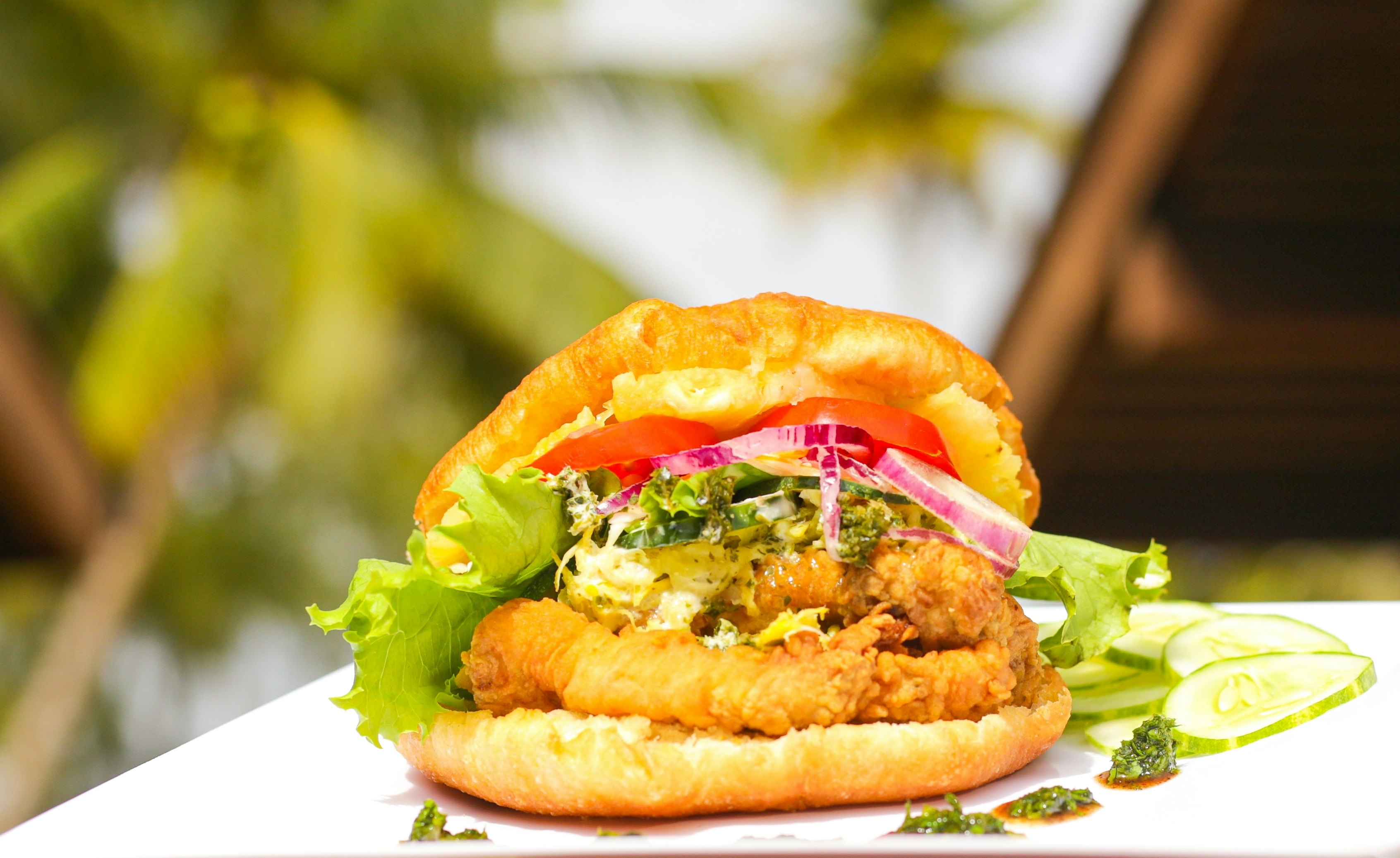
How much money do I need for Trinidad and Tobago?
On average, travelers can budget $200 per day for their stay, though you should expect to spend more during peak periods such as Carnival.
Stays at name-brand hotels start at approximately $225 per night. A cost-effective alternative are Airbnb rentals, which start around $75 per night during off-peak seasons. Rides on buses and maxi-taxis start at $2, while rideshare rates depend on the distance. Dinner for two at a ritzy restaurant can carry a minimum tab of $100. (We recommend splurging at Freebird on the southern end of Trinidad.) On the other hand, at the famous Breakfast Shed overlooking Port of Spain’s harbor, you can snag a coffee for $3 and a sandwich for $5.

More tips for enjoying Trinidad and Tobago
Rely on local expertise
It’s always a great idea to explore Trinidad and Tobago with someone who knows the landscape. Especially in rural areas, GPS isn’t always reliable – so before you set out, get details from your property host, neighbor or friend about how to visit a specific destination.
Bring sunscreen and insect repellent
As in most tropical countries, taking good care of your skin in T&T is a must. Particularly during the rainy season, mosquitoes abound, and a strong insect repellent or netting over your bed will help protect against unwanted bites. With temperatures usually reaching 80°F (27°C) and higher, staying hydrated is essential, and sunscreen with an SPF of 30 or higher is also recommended for any prolonged sun exposure.
Kindness is always free
Most importantly, the most valuable currency in Trinidad and Tobago will always be your smile. Whether you’re at the beach or at the bar, Trinis will happily engage you in lighthearted conversation and always offer to show you a good time – the best testament to the warmth found everywhere on these islands.






